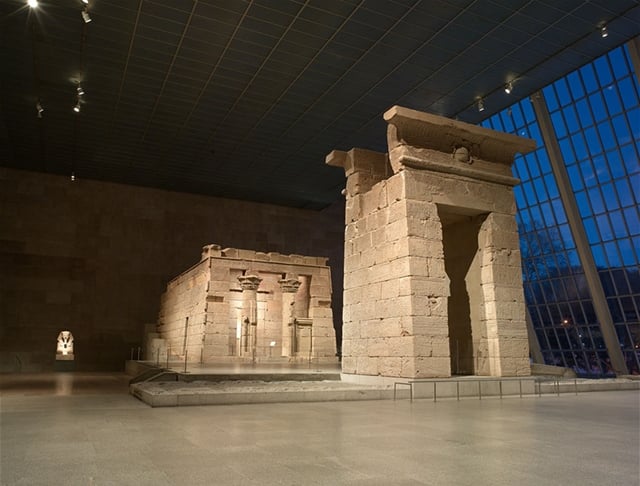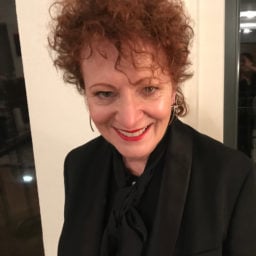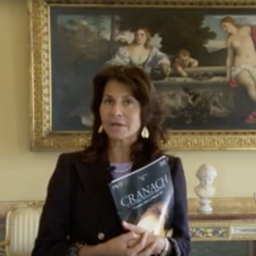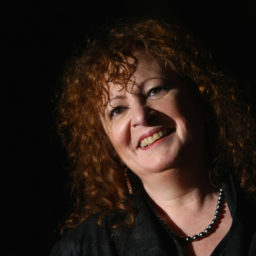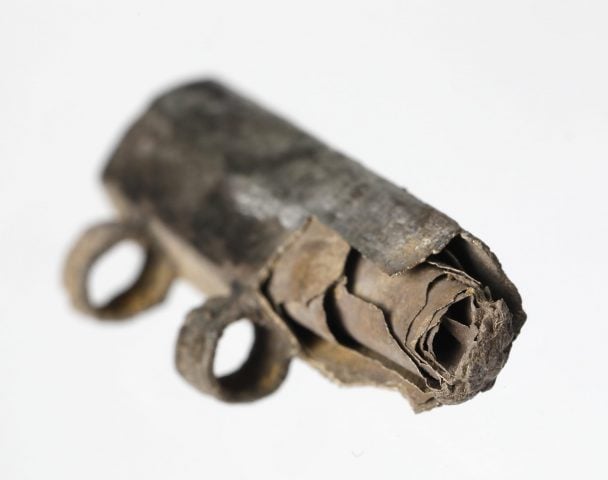The American artist Nan Goldin has staged her first public protest since she launched her activist group PAIN (Prescription Addiction Intervention Now), shaming members of the Sackler family who have profited from the sale of Oxycontin and institutions that have accepted their philanthropy.
On Saturday, March 10, Goldin and a group of around 100 demonstrators gathered in the Sackler Wing of the Metropolitan Museum of Art in New York where they unveiled banners that read “Fund Rehab” and “Shame on Sackler.” The group tossed pill bottles into the moat at the 2,000 year old Egyptian Temple of Dendur, which stands in the Sackler-sponsored area of the museum.
The bottles had mock labels that read “Side Effect: Death” and shared the website link to PAIN’s homepage. Protesters, including Goldin, then laid on the ground and cried “Sacklers lie, people die.”
Branches of the Sackler dynasty established their fortunes in pharmaceuticals made by the company Purdue Pharma, which is responsible for Oxycontin. (One branch of the family, the descendants of Arthur Sackler, did not benefit directly from the sale of Oxycontin. Arthur’s brothers, Mortimer and Raymond, purchased his shares in Purdue well before the drug was developed.)
According to a report in Marketplace, Purdue has recently halted its marketing of the drug to doctors. Since they launched the drug in 1995, Purdue had a highly active marketing campaign targeted at doctors to convince them to prescribe it to patients, setting off the opioid crisis that followed.
“In the name of the dead. Sackler family. Purdue Pharma. Hear our demands. Use your profits. Save our lives,” said Goldin, according to the Art Newspaper. PAIN wants to see the Sackler heirs (who donate generously to museums around the world) put their cultural funding towards solving the crisis and funding rehabilitation for victims of opioid addiction.
Goldin is approaching the first anniversary of quitting opioids and overcoming her dangerous addiction to Oxycontin, which she was prescribed after wrist surgery. A former heroin user, Goldin says she became addicted to Oxycontin overnight and eventually bought the drug from a street dealer when her prescription ran out. She even relapsed into heroin and used Fentanyl.
Goldin wrote a deeply personal essay for a recent issue of Artforum on her struggle and the launch of the activist group and, since January, the group has taken to Twitter and Instagram, using the hashtag #ShameonSackler to promote their cause and share facts about the crisis and illustrate the impact it has had. The opioid crisis has killed 200,000 people, and addiction is up 30 percent, according to a recent report by The Center for Disease Control.
artnet News reached out to Nan Goldin and the Met, but did not receive a response by the time of publishing.
In February, the Guardian reported that Elizabeth Sackler, who is a major donor to the Brooklyn Museum and a descendant of Arthur Sackler, called her relatives’ Oxycontin wealth “morally abhorrent.”
UPDATE, March 14: In a statement provided to artnet News, Jillian Sackler, the wife of the late Arthur Sackler, said in part:
At the time of his death in 1987, Arthur was lauded for his contributions to medical research, medical communications and museums. He was a renowned art collector and connoisseur, and because of this, we have the Arthur M. Sacker Gallery of Chinese Stone Sculpture at The Met, the Arthur M. Sackler Gallery at the Smithsonian, the Arthur M. Sackler Museum at Harvard, the Jillian and Arthur M. Sackler Wing of Galleries at the Royal Academy and the Arthur M. Sackler Museum of Art and Archaeology and the Jillian Sackler Sculpture Garden at Peking University. None of the charitable donations made by Arthur prior to his death, nor that I made on his behalf after his death, were funded by the production, distribution or sale of OxyContin or other revenue from Purdue Pharma. Period.
All these gifts, made in the 1970s and 80s, were made independently of his brothers and their families. Thus, for anyone to assert that institutions received “tainted” gifts from Arthur is ludicrous.
Passing judgment on Arthur’s life’s work through the lens of the opioid crisis some 30 years after his death is a gross injustice. It denies the many important contributions he made working to improve world health and to build cultural bridges between peoples.
